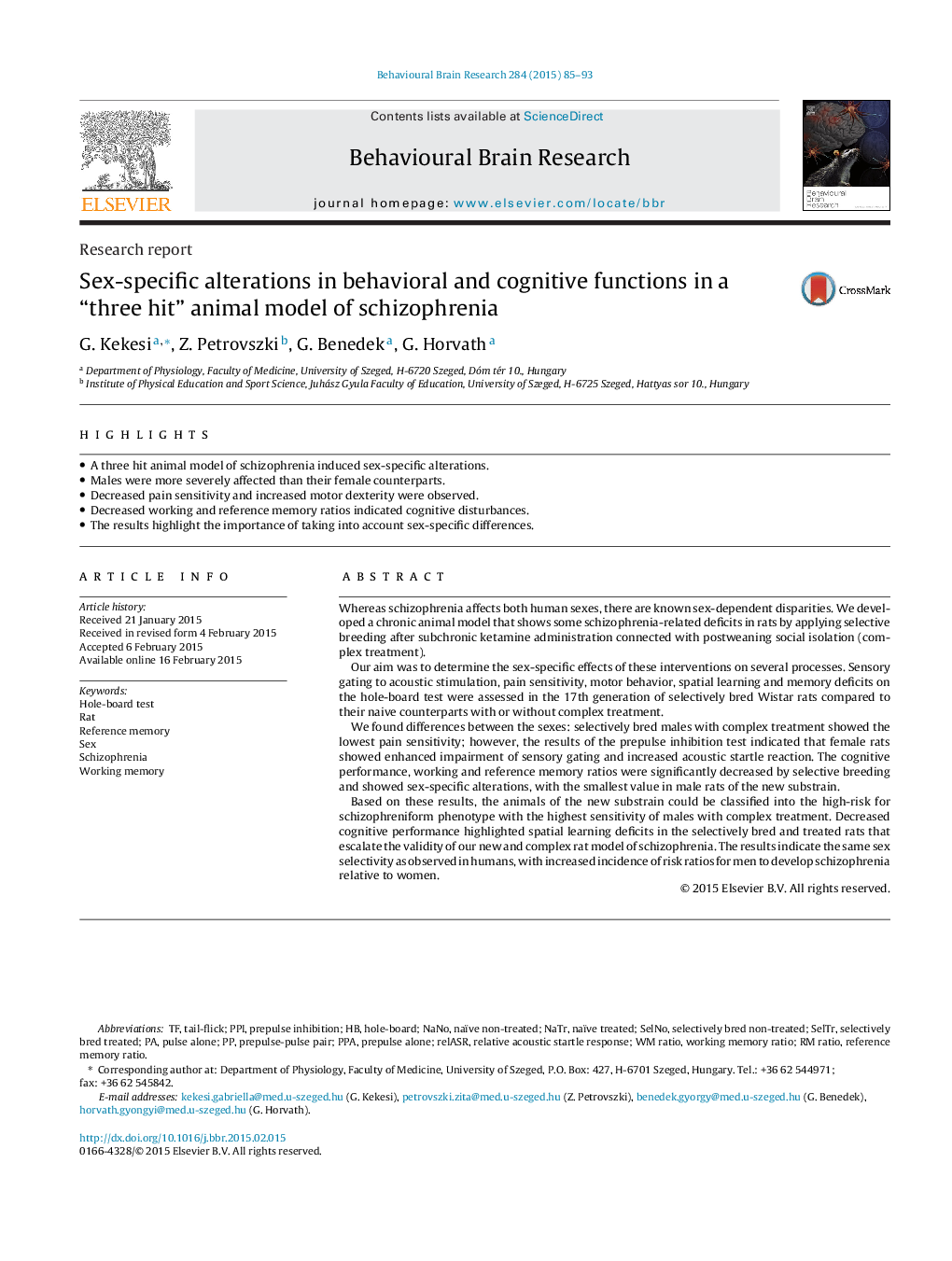| Article ID | Journal | Published Year | Pages | File Type |
|---|---|---|---|---|
| 6256771 | Behavioural Brain Research | 2015 | 9 Pages |
â¢A three hit animal model of schizophrenia induced sex-specific alterations.â¢Males were more severely affected than their female counterparts.â¢Decreased pain sensitivity and increased motor dexterity were observed.â¢Decreased working and reference memory ratios indicated cognitive disturbances.â¢The results highlight the importance of taking into account sex-specific differences.
Whereas schizophrenia affects both human sexes, there are known sex-dependent disparities. We developed a chronic animal model that shows some schizophrenia-related deficits in rats by applying selective breeding after subchronic ketamine administration connected with postweaning social isolation (complex treatment).Our aim was to determine the sex-specific effects of these interventions on several processes. Sensory gating to acoustic stimulation, pain sensitivity, motor behavior, spatial learning and memory deficits on the hole-board test were assessed in the 17th generation of selectively bred Wistar rats compared to their naive counterparts with or without complex treatment.We found differences between the sexes: selectively bred males with complex treatment showed the lowest pain sensitivity; however, the results of the prepulse inhibition test indicated that female rats showed enhanced impairment of sensory gating and increased acoustic startle reaction. The cognitive performance, working and reference memory ratios were significantly decreased by selective breeding and showed sex-specific alterations, with the smallest value in male rats of the new substrain.Based on these results, the animals of the new substrain could be classified into the high-risk for schizophreniform phenotype with the highest sensitivity of males with complex treatment. Decreased cognitive performance highlighted spatial learning deficits in the selectively bred and treated rats that escalate the validity of our new and complex rat model of schizophrenia. The results indicate the same sex selectivity as observed in humans, with increased incidence of risk ratios for men to develop schizophrenia relative to women.
